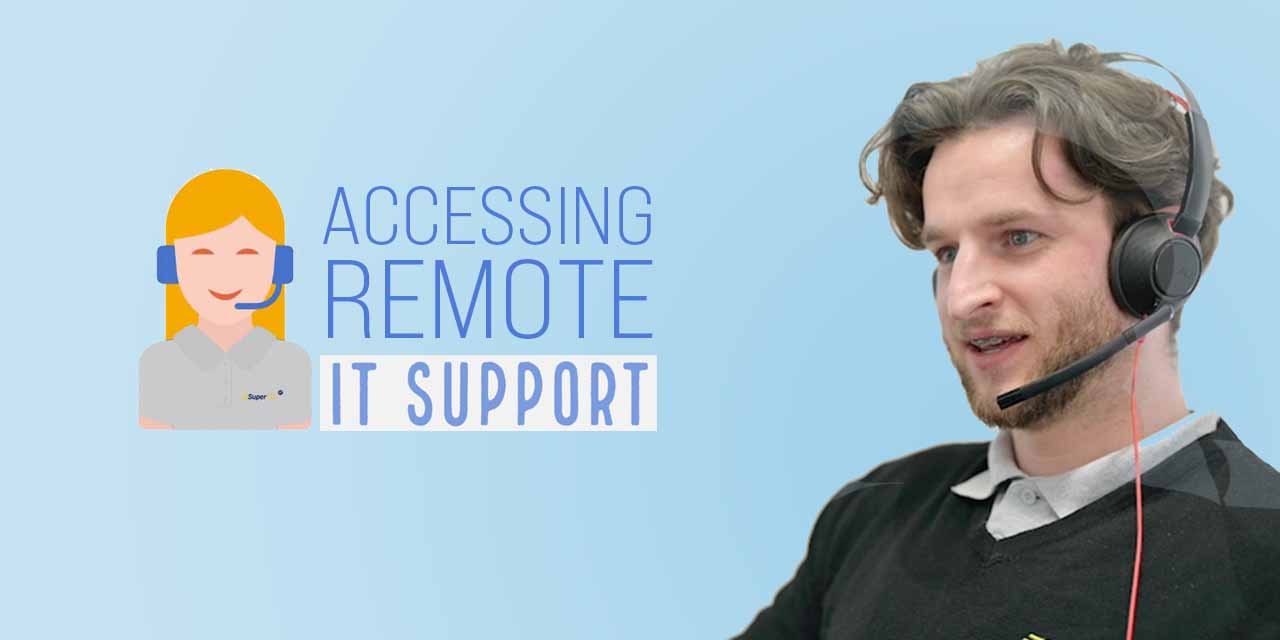How to Access and Use Our IT Support Services
When faced with an IT issue, you need to know how to inform your IT support team and access the help you need quickly and efficiently. This guide...

How long will it take to solve our IT support issue? This is one of the most common questions we are asked. IT support response time and resolve time can drastically differ from one IT company to another.
While IT issues have differing levels of urgency, many businesses may be paying for IT support, but not receiving a reasonable response time or service. Even worse, not receiving a simple fix until the next day. If your IT goes down or there is an inefficiency, then business operations are potentially hindered. Downtime, due to a slow IT response comes at an expensive price. Many organisations are left waiting. Even a slow response to a simple question, such as technical advice, is unhelpful.
If your IT support has a slow resolution time, then it is time to ask questions and benchmark against the industry. Both outsourced IT companies and in-house IT departments should measure their response time and resolve time. In this article we will explain:
What is IT support help desk response time?
IT support response time and Service Level Agreement (SLA)
What is Superfast IT support response and resolution time?
How we keep our response time to a minimum
|
For businesses with internal, in-house IT support, the general rule is, the bigger the organisation, the slower the response. Waiting 4-8 hours for a response is considered normal or typical in medium-large-sized organisations.
When we are asked this question, it’s typically referring to how fast an outsourced IT company can respond to a reactive technical support issue. A reactive technical issue could be a computer, network or printer problem that just occurred. This is where an IT company offering IT support (also known as managed IT service) has a help desk that responds to day-to-day IT issues.
A customer service team or help desk made up of computer technicians are ready to respond to calls or emails and help either remotely or via a site visit. Today the vast majority of issues are handled remotely. Here at Superfast, 95% of IT issues are remotely troubleshot. Every IT issue is logged onto our database and a timer begins, so internally we can log against a number of KPIs including the response time and resolve time.
A response time is the amount of time it takes from first logging an issue with IT support, through to when an IT technician first begins working to resolve the challenge.
The resolution time is the time it takes from first logging an issue with IT support, through to the resolution – when the issue is solved.
A service level agreement (SLA) establishes expectations with your IT company so both parties know what to expect. It will detail information about the level and quality of service you should expect. A service level agreement (SLA) will detail:
It’s important to consider that an SLA contains the maximum time frame. As our name suggests, we pride ourselves on fast response, so we solve the majority of issues well before the agreed time limit, typically within 1 hour.
It is also worth noting that the ‘timer’ for the response time only runs within the hours that you’re covered/contracted. So if you have an IT issue on Friday at 7 pm, unless your agreement is 24/7 and covers weekends, your timer and response time is paused until Monday morning. I advise that your SLA is reviewed in detail prior to signing a contract so that priorities and timescales fit your business needs.
Our IT support response times are:
Our standard service level agreement resolve times are:
Priorities are defined by their urgency and impact:


Business operations have stopped or heavily affected, for example, nobody can send or receive emails
A department business is affected but can still work, for example, Sage is running slow and is affecting the finance department.
One individual is affected, but can still work or a changing needs setting (that does not immediately affect operations).
There will be times when issues are classed as ‘low priority' but need urgent attention. We will work with you to find a flexible solution in these circumstances.
There will also be tasks that are not reactive, such as adding or removing users or buying new equipment, where the work has a specific timescale rather than a response time KPI. For example, it is agreed that a user is removed by the end of their last working day unless they have an immediate departure.
We pride ourselves on providing a fast response and great customer satisfaction. In fact, we changed our name to Superfast IT because we were told so often that our service was quick compared to other IT companies they had used. Here is what Nick Hancock, MD of NPA 24/7 had to say about our response times:
There are a number of processes and techniques we have adopted to keep our customer service response times to a minimum.
If your IT issues are not resolved within a reasonable timeframe then your business is not as efficient or productive as it could be and it's probably time to begin intervention or look for a new IT partner. Schedule time with one of our experts and take advantage of our 6-month money-back guarantee if you are unsatisfied with our service.
|

When faced with an IT issue, you need to know how to inform your IT support team and access the help you need quickly and efficiently. This guide...

What's included with our IT support services? It is important to know what IT support services are included in your managed service agreement when...

Do you know an organisation looking for reliable IT support? Tell them about our guarantee.